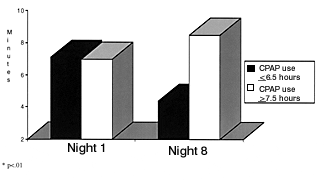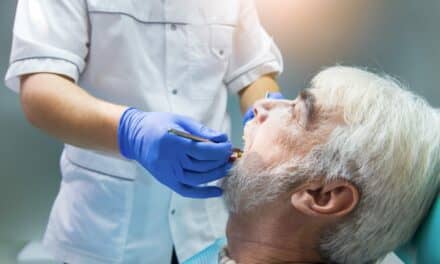Overcome the hurdles of home sleep study reimbursement.

Still, some home medical equipment (HME) providers like Daniel Kublank of Daniel F. Kublank & Associates, Waukegan, Ill, make it work. Kublank says that home sleep testing is a “moneymaker” for his company, but advises providers to make sure that the payors in their area will reimburse for the service. Medicare regulations vary from state to state.
“I give the insurance companies a synopsis of what the test is and why it is done. But we still have problems,” Kublank says. “We will call for preauthorization for testing and give the codes that we are billing, and they will give approval. Or they will say it does not need preauthorization. Then when we send the bill, they say, ‘You did not get a preauthorization,’ or ‘That test is not done in the home.’ Round and round we go.”
Although home sleep studies have met resistance from insurance companies and sleep centers, improvements in technology have lessened the differences between testing in-home and in a sleep laboratory. A preliminary diagnosis for OSA can be made from a sleep screen, in which parameters such as oximetry, nasal/oral airflow, and respiratory effort are measured while the patient sleeps. A sleep center usually performs the more sophisticated polysomnographic testing, which includes an electroencephalograph (EEG) to monitor REM sleep, during which airway obstruction occurs.
A physician trained in sleep disorders examines the recorded data. If the diagnosis is OSA, he or she orders a CPAP test, in which compressed air is delivered through the patient’s nostrils by a mask. Home testing units have an automatic CPAP feature that adjusts the air pressure and records the resulting level of obstruction. The device is usually rented to the patient for several months, and if it proves beneficial, it is then purchased. The most obvious difference between home and laboratory testing is the laboratory’s sleep technician who monitors the night’s sleep and adjusts the CPAP.
An estimated 20 million people suffer from OSA. Approximately 4 million people are tested at the 6,000 sleep testing facilities in the United States, about 850 of which are accredited by the American Academy of Sleep Medicine. An average sleep center has between four and eight beds, so patients often wait up to 6 weeks to be tested. Some professionals in the field believe the use of in-home testing could greatly reduce this wait.
“From my perspective, I think there is a win-win arrangement possible,” says Todd Eiken, RPSGT, director of the Metropolitan Sleep Disorders Center, St Paul, Minn. “The portable in-home study could screen patients for OSA. The sleep lab could then perform CPAP titration on all the patients. Since there is a higher reimbursement for that part of the testing, revenue for the sleep labs would increase slightly. In-home testing is cheaper, so insurance companies would save money, and more patients could be tested. The key is making sure that the HME providers accurately perform the testing under the direction of an approved sleep lab.”
Technicians who are thinking about offering home sleep studies need to have a comprehensive business plan before making a move. Kublank suggests entering into preferred provider agreements with health maintenance organizations. “The chances of getting reimbursed are better, and you are doing more testing, although it is for lower payment.”
The other option is forming an alliance with a sleep laboratory. “Have a good relationship with the hospital or sleep center,” says Stewart Pace, executive vice president of MedSouth, a Jasper, Ala-based HME company. “Show them that you are sophisticated.”
That means investing in equipment and trained personnel, but it is not always easy. “The majority of sleep centers are not interested in working with HMEs,” Eiken says.
Although Eiken himself runs a sleep center, he is an advocate of home sleep studies. He started a home sleep study program while working for MedSouth. “We had a 70% success rate in Alabama, based on patients’ and spouses’ subjective evaluation,” Eiken says. “There are people who would otherwise never be tested if not for portable monitoring. Sleep centers are usually in larger urban areas, and it can be difficult for people who live 3 or 4 hours away to get there.”
After screening about 500 patients in 18 months, the program was dropped because of reimbursement problems, Pace says. “We were told that Medicare and Blue Cross would be paying for home sleep screening, but that did not work out,” he says. “I think Blue Cross was afraid that everyone and his brother would suddenly get into the sleep study business and that they would have thousands of claims coming in. We were most successful working with the [Department of Veterans Affairs]. We identified quite a few of their patients with OSA. But when we lost the contract for providing ancillary respiratory services, it just was not cost-effective to provide the sleep screening.”
Opponents of home testing point out problems with portable equipment. A lead can fall off and no data will be recorded, possibly giving a false negative. The patient can roll over and pinch a wire, causing artifact that a technician could interpret as a false positive.
Kublank says the equipment is now sophisticated enough to avoid these problems. His company, which began doing home sleep studies 10 years ago, uses equipment that constantly monitors all channels. If the information is interrupted in any way—a lead falling off, for example—the unit alarms and the patient wakes up.
“When you look at the data, you can tell if the patient was asleep by looking at body position, pulse oximetry, and heartbeat,” Kublank says. “We also ask our patients to keep a sleep diary to record how long it took them to fall asleep, and we can compare that to the instrument data.”
Equipment varies in price from $5,000 for a screening device to $15,000 for a comprehensive polysomnographic unit. An HME technician delivers the equipment to the patient’s home, sets it up in the bedroom, and teaches the patient how to prepare for the testing.
“We provide a video that they can watch and give them a 24-hour 800 number that they can call if they have any problem,” Kublank says. “If there is any question of a patient being able to follow instructions, a technician returns in the evening and sets everything up.”
The other component for successful home testing is trained personnel. Some sleep centers offer a 1- or 2-week intensive session as a first step. Eiken sees education as another area of cooperation between sleep centers and HMEs. The center could provide on-the-job training, monitor accuracy, and provide patient education and interpretation of data. Technicians also need to know when to make a referral for more extensive testing. “The sleep community as a whole should be the innovators and determine how home sleep testing should be used,” Eiken says. “There are benefits for everyone.”
A few years ago, MedSouth formed a joint venture with a local hospital and created a sleep center. “I think the demand is such that eventually almost every hospital with a large population base will have a sleep-disorder lab,” Pace says. “This may be the way that home sleep studies finally get accepted.
“But I’m through being a pioneer. We now know how to run a home sleep studies program, and when the payors decide they want to pay, we might jump back in.”
Lyn Kidder is a contributing writer for Sleep Review.



